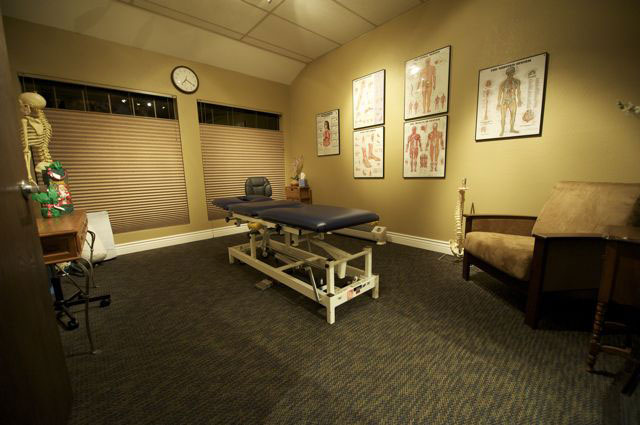in Osteopathy
My Teaching Day As An Osteopath Lecturer

Over the last several years I have been spending one day a week in London, teaching student Osteopaths the techniques that we use for treatments, as well as a bit of lecturing and also supervising in the college clinic; where students can see and treat the patients themselves.
For the first and second-year students, the modules I teach are soft tissue techniques (known as STT). The first-year module is designed to get the students to a level of proficiency so that they can become insured to practise massage away from the college and work independently while they continue to study.
The techniques are general Swedish massage-type techniques in the first term covering all areas of the body, moving on the lymphatic drainage techniques in the second term which evolves into treating people in different positions such as seated or side-lying. The third term concentrates on when to treat and when not to depending on health and lifestyle issues as safety is a major factor in becoming an Osteopath but also so the students are safe to practise away from the college should they decide to do so.
The second-year module moves on to more clinical-based techniques that aim to influence the central nervous system through the applied techniques.
Neuro-Muscular Techniques (NMT) differ from regular massage because they impact not only the muscles and soft tissues of the body but also with the nervous system (the term “neuromuscular” relates to both nerves and muscles). Treatment aims to influence and change specific nerve endings in the muscle cells that control the length and tension of the muscle, particularly useful when there is a contracture (tightness) in the muscle group.
NMT is a great manual therapy to use for people in a large amount of pain as the therapist can work on the painful area effectively, without causing further pain. There can be an almost immediate reduction in sensitivity and pain which allows for subsequent deeper work to be better tolerated.
Muscle Energy Techniques (MET) come under the umbrella term of Neuro-muscular techniques and have the patient initiate specific muscle contractions to actively engage the muscle you wish to desensitise. This is followed by the practitioner passively taking the muscle into an increasingly stretched position over 3 repetitions. The practitioner directs a counter force against the muscular effort in a specific direction and from a controlled position to normalise joint range, rather than just increase flexibility These techniques can be used on any joints with a restricted range of motion (ROM) identified during the passive assessment to restore normal muscle tone.
MET applied in conjunction with massage therapy can be very beneficial in helping to achieve this relaxation effect. the focus of MET is to reach ‘normal’ ROM.
The physiological effect is achieved because of a relaxation period that follows the muscle contraction, known as post-isometric relaxation. This effect is facilitated by muscle spindles which are highly sensitive to changes in length and speed of lengthening/shortening of the muscle fibres and have a direct link to the spinal cord and thus the central nervous system.
Positional Release Therapy (PRT) also comes under the umbrella of NMT. This aims to resolve pain and tissue dysfunction by positioning the body and tissue in positions of comfort, whereby the central nervous system can reset the resting length of the muscle and interrupt the pain spasm cycle.
The primary goal of PRT is to encourage a positive situation to correct musculoskeletal and neurological imbalances and facilitate tissue health.
All of these treatment options can be used either individually or in combination and it is how and when to implement them that only comes with experience so students are encouraged to do as much practice as possible to improve their hands-on work but also understand the clinical reasoning for the application.
The degree as a whole is highly weighted towards academic subjects such as anatomy and physiology but also has huge depth into biochemistry, nutrition, orthopaedics and paediatrics, to name but a few, so the opportunities to put manual treatments into practice are limited due to the time taken with these academic subjects.
From the third year onwards through to graduation at the end of four years, students are in the clinic treating patients, mostly referred from local GPs in the Camden area. My Job as a clinic tutor means I supervise the students in their treatment of these patients to ensure they are safe practitioners and proficient diagnosticians able to spot not only treatable musculoskeletal conditions but also to acknowledge when it is inappropriate to treat because of potentially more pressing symptoms that need investigation by medical doctors. Also, how to be cautious when dealing with patients who have co-morbidities such as heart disease or diabetes that require certain awareness so as not to increase or aggravate symptoms.
I thoroughly enjoy my day in London, interacting with the students at various phases of their journey into Osteopathy. Being part of the faculty not only looks good on my C.V. but also ensures that I keep myself up to date with the latest evidence in manual and medical treatments. I have also made friends with my colleagues, many of whom taught me as a student, and thus able to share experiences and case studies which have become an invaluable tool to my own clinical development.
This article was written by Matthew Oliver M.Ost DO ND. Osteopath.
- Deepen Embodiment: Somatic Breathing with the Realization Process - 20th June 2025
- How Massage Transforms Muscle and Physical Health - 16th May 2025
- What is Traditional Chinese Medicine (TCM)? - 29th April 2025
